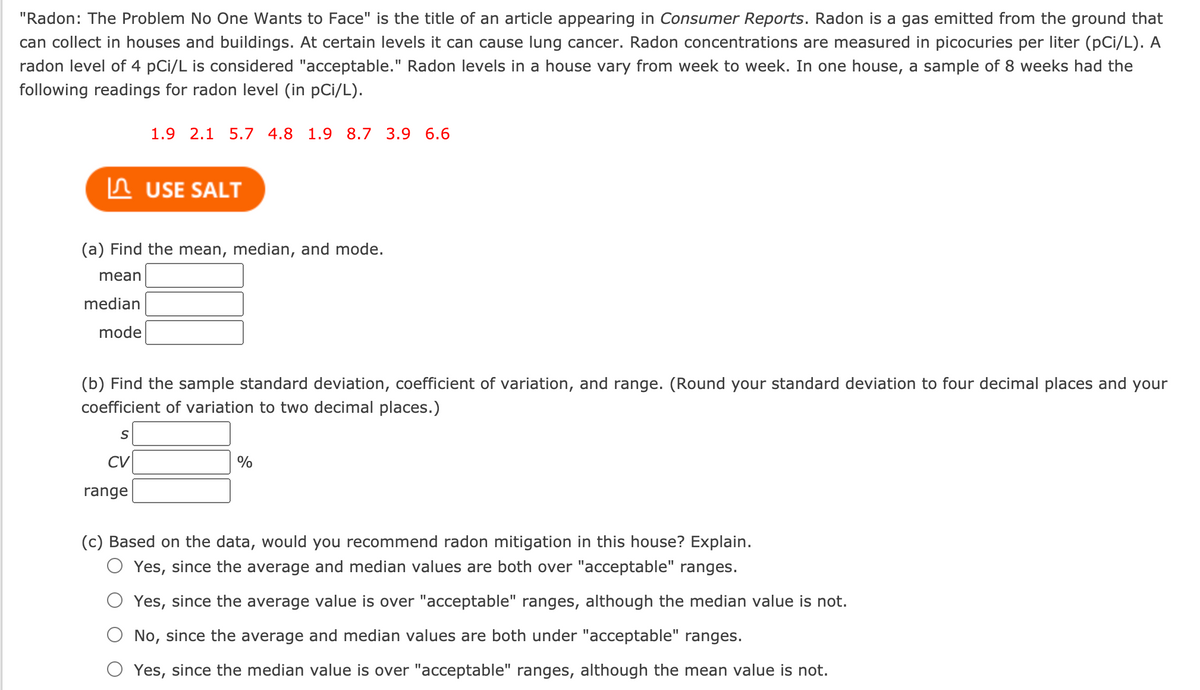"Radon: The Problem No One Wants to Face" is the title of an article appearing in Consumer Reports. Radon is a gas emitted from the ground that can collect in houses and buildings. At certain levels it can cause lung cancer. Radon concentrations are measured in picocuries per liter (pCi/L). A radon level of 4 pCi/L is considered "acceptable." Radon levels in a house vary from week to week. In one house, a sample of 8 weeks had the following readings for radon level (in pCi/L). 1.9 2.1 5.7 4.8 1.9 8.7 3.9 6.6 n USE SALT (a) Find the mean, median, and mode. mean median mode (b) Find the sample standard deviation, coefficient of variation, and range. (Round your standard deviation to four decimal places and your coefficient of variation to two decimal places.) CV % range (c) Based on the data, would you recommend radon mitigation in this house? Explain. O Yes, since the average and median values are both over "acceptable" ranges. O Yes, since the average value is over "acceptable" ranges, although the median value is not. O No, since the average and median values are both under "acceptable" ranges.
Contingency Table
A contingency table can be defined as the visual representation of the relationship between two or more categorical variables that can be evaluated and registered. It is a categorical version of the scatterplot, which is used to investigate the linear relationship between two variables. A contingency table is indeed a type of frequency distribution table that displays two variables at the same time.
Binomial Distribution
Binomial is an algebraic expression of the sum or the difference of two terms. Before knowing about binomial distribution, we must know about the binomial theorem.

Descriptive statistics :
There are several descriptive statistics which are values that give a view of the distribution of data. The measure of central tendency are mean, median, and mode while the description of the variation of data is the range, standard deviation and coefficient of variation
Given Information :
"Radon: The Problem No One Wants to Face" is the title of an article appearing in Consumer Reports. Radon is a gas emitted from the ground that can collect in houses and buildings. At certain levels it can cause lung cancer. Radon concentrations are measured in picocuries per liter (pCi/L). A radon level of 4 pCi/L is considered "acceptable." Radon levels in a house vary from week to week. In one house, a sample of 8 weeks had the provided readings for radon level (in pCi/L).
(a)
- The mean of a data set is the sum of the terms divided by the total number of terms. Using math notation we have:
Here, Sum of terms = 1.9 + 2.1 + .. + 6.6 = 35.6
Number of terms = 8
Therefore ,
Mean : = 4.45
Trending now
This is a popular solution!
Step by step
Solved in 3 steps









